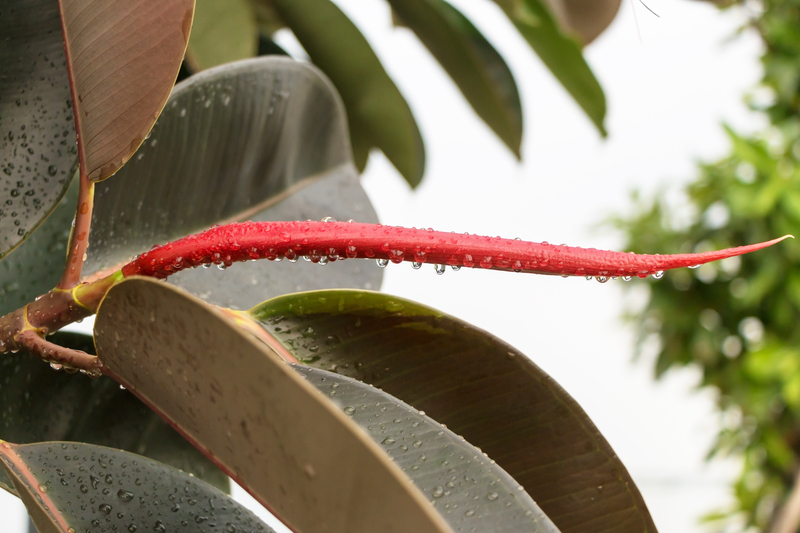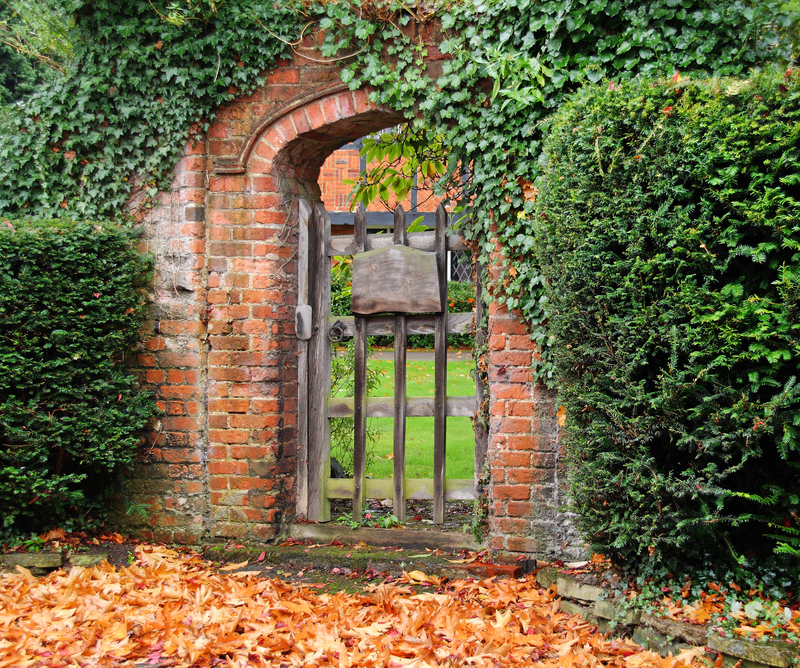Smart Lawn Care Tricks to Beat Summer Drought Damage
Is your beautiful green lawn at risk of turning brown under the scorching summer sun? Drought stress is one of the leading causes of lawn decline during hot months. Smart lawn care strategies can help you maintain a vibrant, healthy yard even during extended dry spells. In this comprehensive guide, we'll share innovative, water-saving, and eco-friendly techniques to help you beat summer drought damage, ensuring your grass stays lush and resilient.
Understanding Drought Stress in Lawns
Drought stress occurs when your turfgrass receives less moisture than it needs to thrive. During summer dry spells, high temperatures, intense sunlight, and evaporating winds conspire to sap moisture from your lawn, leaving it brown and brittle. Recognizing the signs of drought damage early and implementing advanced lawn care tricks can help you rescue and preserve your lawn's vitality.
Signs Your Lawn Is Suffering from Drought
- Browning and wilting: Grass blades turn dull green or brown and lose their upright posture.
- Footprints linger: Impressions from footsteps don't pop back quickly.
- Slow growth: Mowing frequency decreases as grass struggles to grow.
- Soil cracks: Dry, compacted soil structure with visible cracks.
Early detection and swift action are crucial in protecting your lawn from irreversible drought damage.

Smart Lawn Care Tricks for Drought Protection
Ready to outsmart the heat and save water? Consider these advanced approaches for optimal summer lawn care:
1. Choose Drought-Tolerant Grass Species
One of the smartest choices for long-term lawn resilience is selecting a grass type suited to dry climates. Some varieties naturally withstand drought better than others.
- Bermudagrass: Tolerates heat and drought, ideal for full sun areas.
- Zoysia: Dense, slow-growing, and conserves water exceptionally well.
- Tall Fescue: Deep root systems enable better drought resistance.
- Buffalograss: Native to prairies with low water needs.
Pro tip: If you're planning to seed or resod, assess your region's climate and soil type before choosing a grass variety for maximum drought protection.
2. Upgrade to Smart Irrigation Systems
Conventional watering methods can waste precious water during droughts. Modern smart irrigation controllers and watering systems optimize your lawn's moisture with precision.
- Weather-based controllers: Adjust their watering schedules automatically according to local weather data.
- Soil moisture sensors: Prevent overwatering by measuring actual soil moisture and watering only when necessary.
- Drip irrigation: Delivers water directly to roots, minimizing surface evaporation.
Smart watering schedules can reduce usage by up to 50% during harsh summers.
3. Water Deeply but Infrequently
Shallow, frequent watering encourages weak surface roots and increases vulnerability to drought. Instead:
- Water early in the morning (before 10AM) to minimize loss from evaporation and wind.
- Apply 1 to 1.5 inches of water per week, either from rainfall or irrigation, in fewer sessions.
- Test with a rain gauge or tuna can to ensure accurate delivery.
Deep watering techniques help train grass roots to grow deeper, making your lawn more drought-resilient.
4. Sharpen Your Mower Blades and Adjust Cutting Heights
A well-maintained mower can significantly reduce drought stress. Dull blades tear the grass rather than cut it cleanly, allowing more moisture loss.
- Sharpen blades at least twice per season.
- Set mowing height higher (3-4 inches for most grass types) to shade soil and retain moisture.
- Never remove more than 1/3 of the grass blade at a time.
Taller grass develops deeper roots and provides its own natural sun protection--essential in summer droughts.
5. Mulch Grass Clippings and Use Organic Mulch
Don't bag your clippings during the hot months! Grasscycling can shield your soil from the sun and conserve valuable moisture.
- Leave clippings on the lawn: They decompose quickly, returning nitrogen and helping retain soil moisture.
- Apply a thin layer of organic mulch (like shredded leaves or compost) around trees and garden edges to reduce evaporation and regulate temperatures.
Mulching is a water-wise lawn care trick perfect for summer droughts.
6. Aerate Your Lawn to Improve Water Infiltration
Compacted soil restricts root growth and water absorption, increasing your lawn's susceptibility to drought. Core aeration is an essential lawn maintenance solution:
- Remove 2"-3" deep plugs of soil in early spring or fall using a core aerator.
- Aerate at least once a year, especially on heavily trafficked lawns.
- Follow up with overseeding to boost turf density and drought resilience.
Aeration ensures that water and nutrients reach the grass roots where they're needed most.
7. Embrace Lawn Care Technology
Digital advancements have revolutionized smart lawn care. Leverage these tools to monitor conditions and automate drought protection:
- Smart lawn sensors: Track soil moisture, sunlight, and temperature in real-time.
- Connected weather apps: Integrate weather forecasts into your irrigation system's scheduling for proactive drought management.
- Robotic mowers: Maintain consistent grass height, reducing stress during dry periods.
High-tech lawn equipment can take your water-saving game to the next level this summer.
8. Apply Drought-Resistant Lawn Fertilizer Wisely
Fertilizing during drought requires careful consideration. Too much fertilizer can stress turf and increase its thirst for water. For best results:
- Use slow-release, organic fertilizers formulated for drought conditions.
- Apply fertilizer in late spring or early fall--not during peak summer heat.
- Test your soil before application to avoid excess nutrients.
A proper fertilization schedule boosts lawn health, increases drought resistance, and promotes recovery after stress.
9. Monitor and Remedy Lawn Pests and Diseases
Stressed lawns are more vulnerable to pests and fungal diseases during drought. Vigilance and timely action can save your summer grass:
- Inspect regularly for signs of grub damage, chinch bugs, or fungal outbreaks.
- Promote beneficial insects and apply eco-friendly pesticides if necessary.
- Remove excess thatch layers (over 1/2 inch) to prevent pest harborage and allow water to reach roots.
Integrated Pest Management (IPM) offers a balanced, environmentally friendly approach to pest control amidst drought stress.
10. Know When to Let Your Lawn Go Dormant
Sometimes, the smartest lawn care trick is to let nature take its course. Many cool-season grasses go dormant during extreme drought to conserve energy. Brown grass doesn't necessarily mean dead grass--it's a survival strategy!
- Don't apply fertilizer to dormant lawns.
- Stick to once-a-month deep watering to protect the plant crowns.
- Avoid heavy foot traffic until the lawn recovers after rain returns.
With patience and minimal intervention, your lawn will bounce back beautifully once cooler, wetter weather arrives.
Eco-Friendly and Water-Wise Lawn Maintenance
Smart lawn care isn't just about saving your grass; it's also about being a good steward for the environment. Emphasize water conservation and choose sustainable practices:
- Collect rainwater: Install barrels to capture water for irrigation.
- Upgrade to drought-tolerant landscaping (xeriscaping): Incorporate native grasses, ornamental perennials, and hardscaping to reduce water needs.
- Use lawn alternatives: Ground covers like clover or moss perform better during droughts with very little care.
Eco-conscious lawn care saves water, time, and money while ensuring your outdoor space thrives through the harshest summer months.

Frequently Asked Questions About Beating Lawn Drought Damage
How often should I water my lawn during a drought?
Water deeply and less frequently--about once or twice per week, applying a total of 1 to 1.5 inches of water. Overwatering wastes water and weakens drought tolerance.
Can I fertilize my lawn during a drought?
It's best to avoid fertilizing when grass is stressed. Apply slow-release fertilizer in the spring or fall before drought conditions set in, and always test your soil first.
Will my brown lawn recover after a summer drought?
Yes, many turfgrasses naturally go dormant to survive drought. With regular care and proper watering when rain returns, most lawns will recover within a few weeks.
Conclusion: Outsmart Drought with Smart Lawn Care
Summer heat and drought pose major challenges for every homeowner and landscape pro. By embracing smart lawn care techniques--from selecting the right grass species to employing cutting-edge technology, optimized watering practices, and eco-friendly choices--you can beat drought damage and maintain a stunning green oasis all summer long.
Adapt your approach, invest in the best lawn care tools, and remember to monitor, adjust, and protect your lawn as both the weather and your turf's needs change. With these smart strategies, your yard can stay green, resilient, and vibrant, no matter how dry and hot the summer may get!
Need more in-depth tips on smart lawn care for your specific region? Explore local university extension offices or consult with landscape professionals for tailored advice on beating summer drought damage and keeping your lawn healthy year-round.